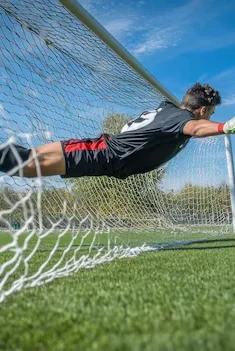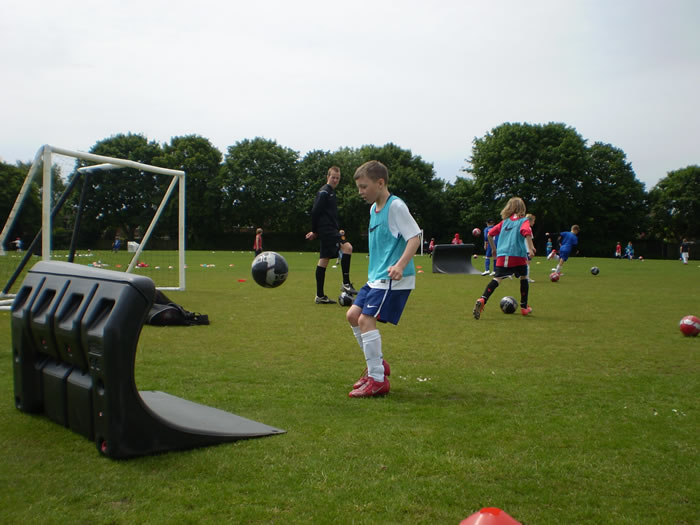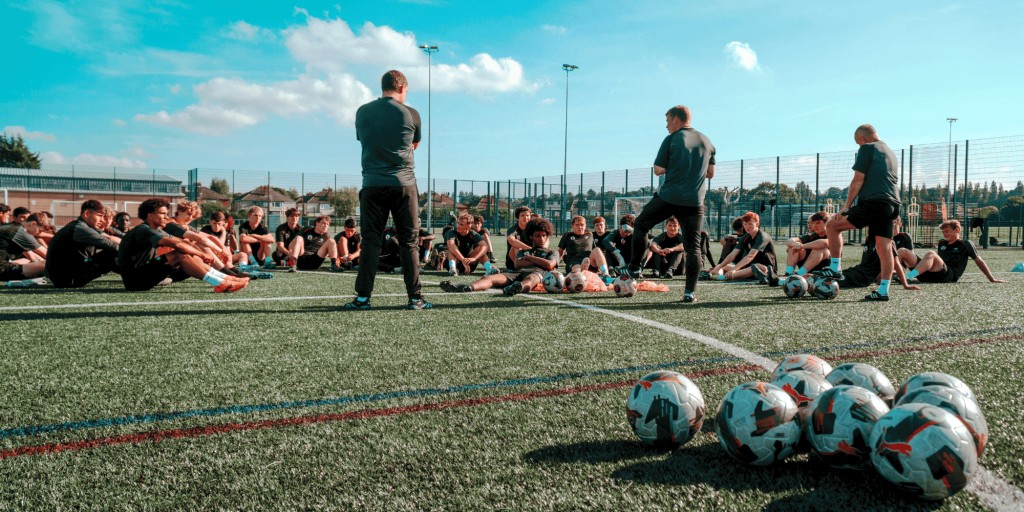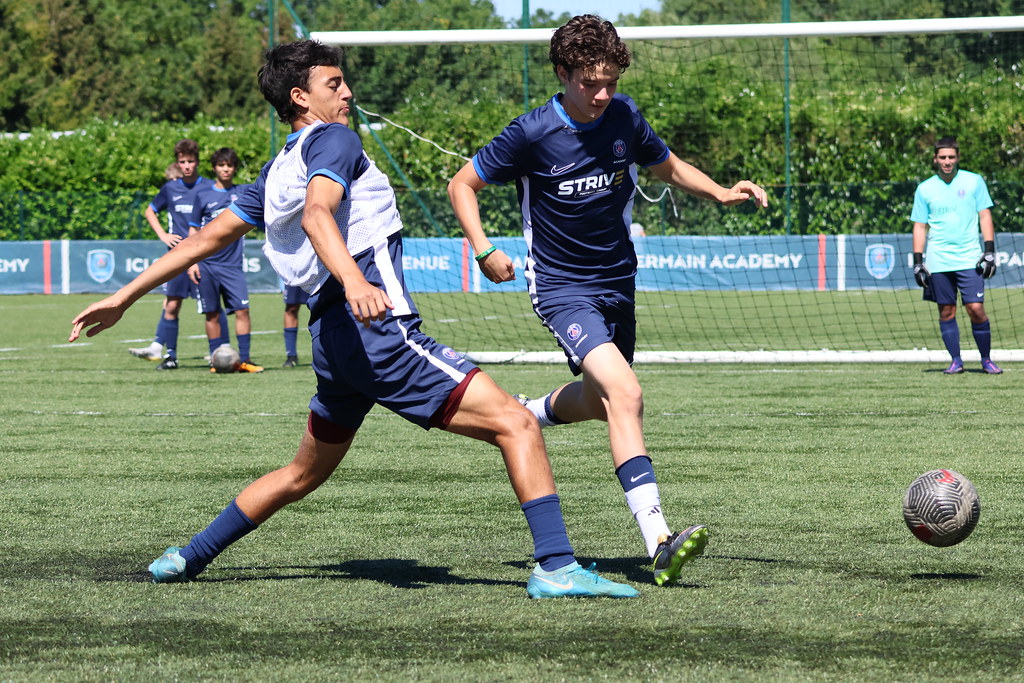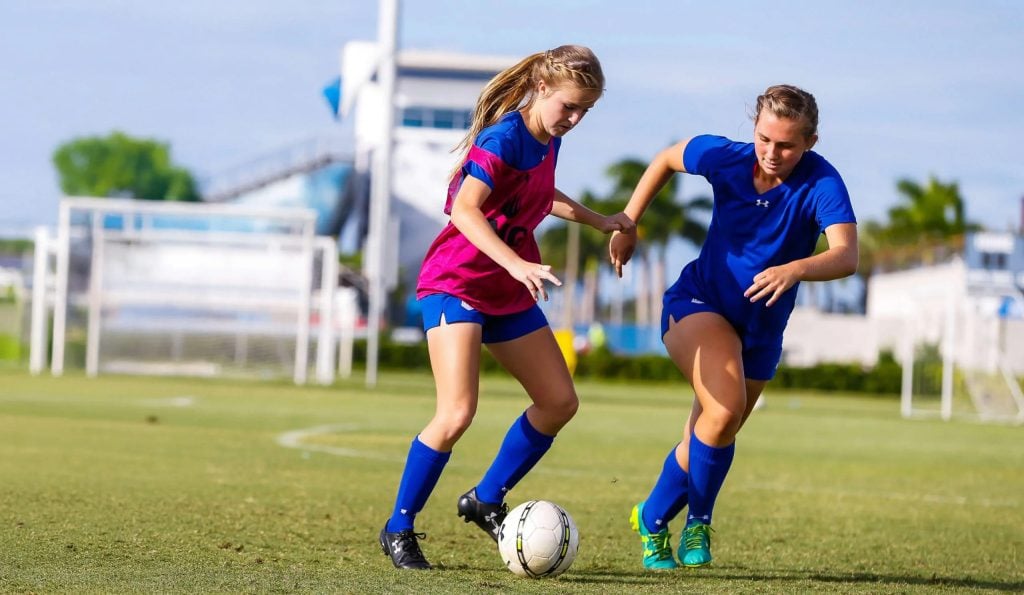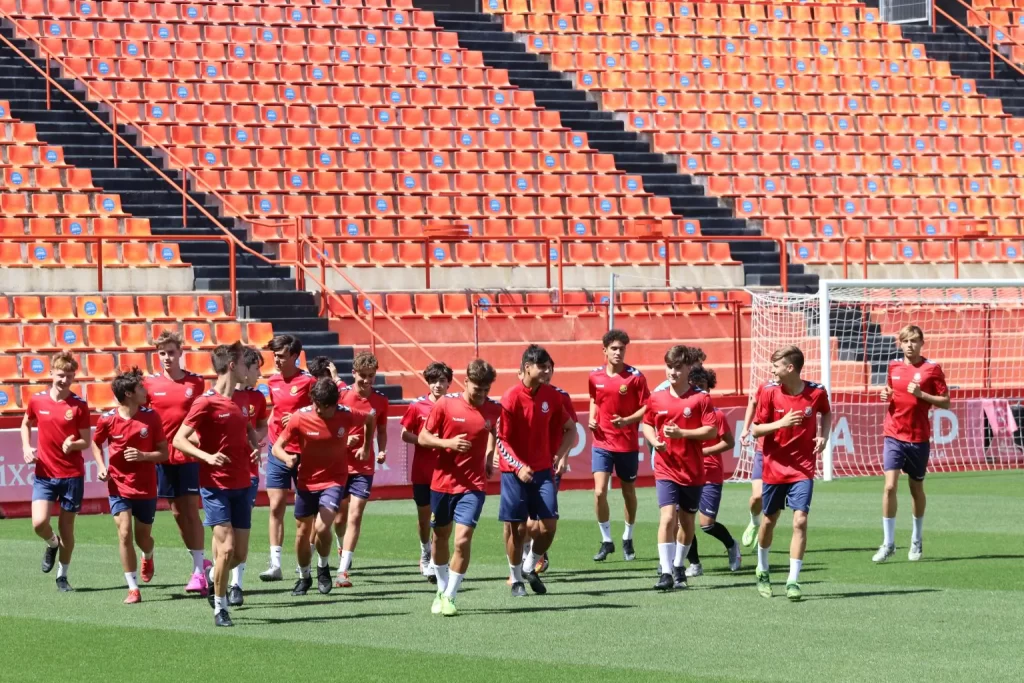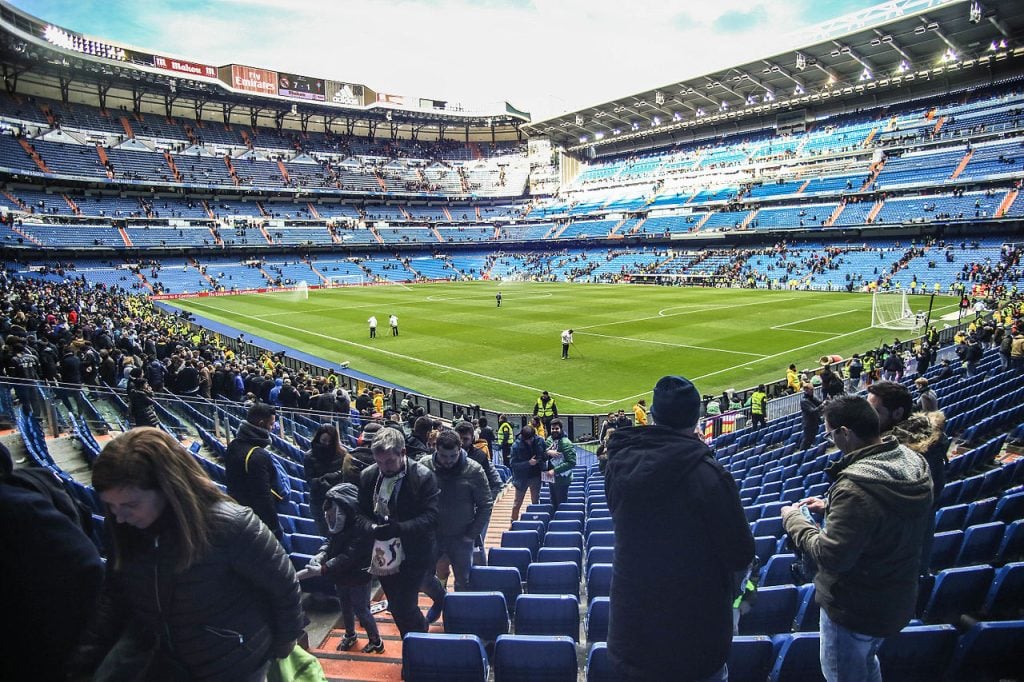For decades, there has been a popular belief that a player isn’t allowed to touch the goalkeeper in the 6-yard box. However, the only privilege the goalkeeper has, both in the 6-yard box and the 18-yard box (or penalty box), is to be able to hold the ball with their hands.
This myth, passed on by fans, players, and coaches, continues to circulate in today’s generation of soccer players, despite not being in line with FIFA’s rules.
This is why we have written this post, in order to clarify whether the goalkeeper can or can’t be touched in the 6-yard box, what the rules say, and how referees interpret the regulations these days.
Table of Contents
FIFA rules regarding contact with the goalkeeper
Many people still believe the FIFA rulebook prohibits contact with the goalkeeper inside the small box, when this simply isn’t true.
In fact, in the regulations there is no restriction on contact or ball disputes between a player and the goalkeeper; the only exception is when the goalkeeper clearly has possession of the ball.
When the goalkeeper has possession of the ball, rule 12 stipulates that no player can challenge them for it. Having possession of the ball means that the goalkeeper has the ball in their hands, and any attempt by players to take it off them will be considered a foul.
In practical terms, no player can take the ball away from the goalkeeper when they are holding the ball, which, in some cases can even be when only one of their gloves is touching the ball, as long as the ball is touching the ground.
This is the basic rule that has always been applied.

How referees apply the rules
The application of the rules is the trickiest issue in the debate around whether goalkeepers can be touched inside the 6-yard box or not.
The inconsistency shown by referees in recent times can cause confusion among fans and even among the players themselves, in a similar way to current interpretations of handball rules, although that’s an even deeper and more hotly-debated topic.
In essence, referees have the duty to treat the goalkeeper as if they were any other player on the field as far as disputes for the ball are concerned.
But what about contact that occurs during a corner kick?
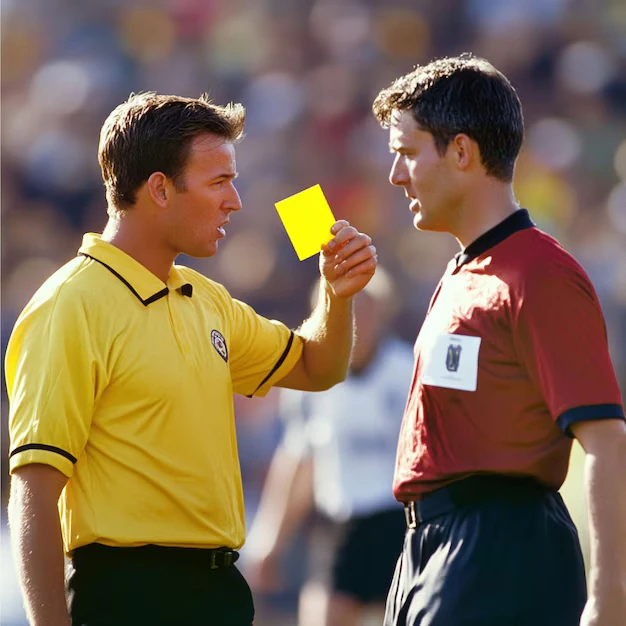
Can the goalkeeper be touched in the 6-yard box during corners or free kicks?
The rules surrounding goalkeepers and the 6-yard box are often applied more frequently in set pieces, which is when more crosses tend to come into the box.
In these cases, when the goalkeeper catches or clears a ball that comes into the box with their hands, then the referee must judge the passage of play and any possible fouls committed as if the goalkeeper were any other outfield player, as they have no preferential treatment in either the 18-yard or 6-yard box.
A foul should only be called when a player from the opposing team illegally prevents the goalkeeper from touching the ball or blatantly impedes their movement, either by pushing, grabbing or running into them.

According to former Spanish referee Iturralde González, the tendency to overprotect goalkeepers has created confusion in the soccer world. He states that any legal challenge that occurs while the goalkeeper doesn’t have the ball in their hands should not be sanctioned as a foul.
Furthermore, coaches at goalkeeper camps have the duty to train goalkeepers to have solid knowledge of the rules and not rely on myths to justify their errors.
Of course, it remains at the discretion and interpretation of the referee to judge the intensity of the challenge between the player and the goalkeeper. Additionally, it will be their job to determine whether the contact between the player and the goalkeeper influenced the outcome of that particular period of play.
Fortunately, when those moves end in a goal, referees can rely on VAR to correct any wrong decisions.
In fact, since the implementation of VAR, there has been increasingly more permissiveness regarding contact between players and goalkeepers.
Before its implementation, many referees applied the non-existent rule of “you can’t touch the goalkeeper in the 6-yard box” to cover their backs in case there may have been a foul during contact.
Now, thanks to video refereeing, referees have greater freedom to judge these types of incidents, which helps them to be more meticulous in their rulings.

Recent controversial incidents
One of the most controversial recent incidents involving goalkeepers occurred in the 2021-2022 Champions League, in the memorable 2nd leg match between Real Madrid and PSG at the Santiago Bernabéu.
The controversial incident occurred between Karim Benzema and Gianluigi Donnarumma. The Italian goalkeeper, with the ball at his feet and inside the 6-yard box, was challenged by the French player and there was definite contact.
This contact, judged by the match referee as legitimate, resulted in the ball ending up at the feet of Vinícius Jr., who then passed to Benzema who scored the first goal of the historic comeback by the Spanish team.
This incident produced many debates on social media about the legitimacy of the pressure exerted by Benzema on the goalkeeper, with many fans claiming that, as he was inside the 6-yard box, he couldn’t be touched by the opponent.
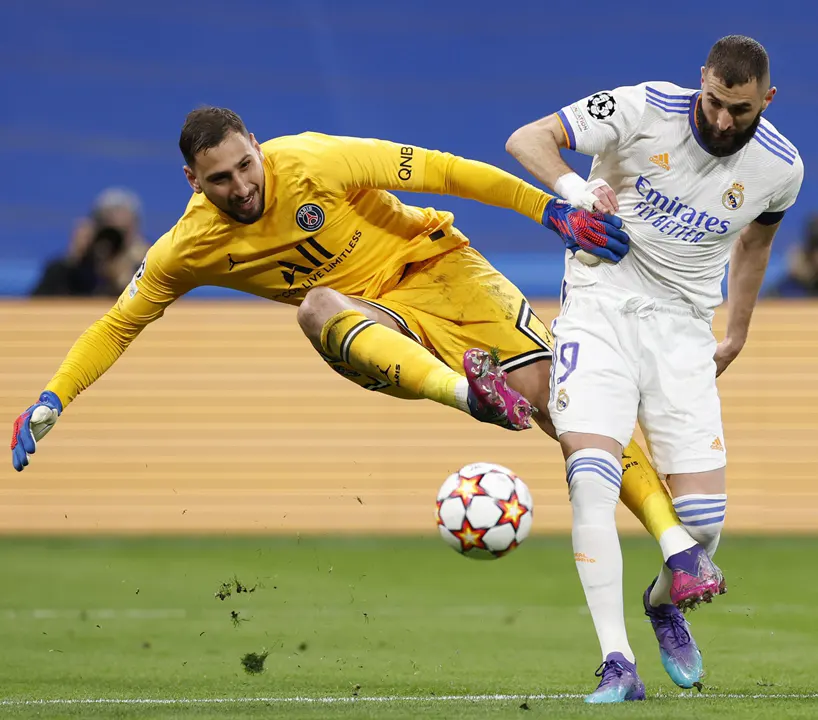
Fortunately, apart from the controversial challenge, this incident helped to clarify what the rulebook states, and helped people understand that, whether they are in the 6-yard box or the 18-yard box, goalkeepers aren’t entitled to special treatment if they don’t have the ball in their hands.
It shouldn’t be confused with passive offside
This past season has also seen an increase in calls for passive offside in moves involving players who, being in an offside position, hinder the movements or obscure the vision of the goalkeeper.
However, this shouldn’t be confused with the myth of “you can’t touch the goalkeeper in the 6-yard box“, because it has absolutely nothing to do with it.
For example, a move that caused a lot of commotion last season occurred in the first leg match between RB Leipzig and Real Madrid in the UEFA Champions League round of 16.
Early on in the match, the referee disallowed a goal for the home team due to passive offside. One of the players on the German side, in an offside position, made contact with goalkeeper Andriy Lunin, forcing him to change position and affecting his ability to react to the shot.
Despite the contact, the goal was disallowed for passive offside, and NOT for a foul on the Ukrainian goalkeeper.
To clarify things, if the RB Leipzig player hadn’t been offside, the goal could have been given, as the contact between the player and the forward wasn’t serious enough to warrant it being called a foul. Although, of course, this type of decision depends on the way that particular referee interprets it.

Conclusions on whether the goalkeeper can be touched in the 6-yard box or not
In our conclusion, It’s important to clarify that the goalkeeper can be touched both inside the 6-yard box and the 18-yard box, as long as the contact is a legitimate challenge.
- There is no rule to prohibit a player from the opposing team from touching the goalkeeper in the 6-yard box
- The goalkeeper should be treated like any other player when they don’t have the ball in their hands
- Players can legitimately challenge for the ball with the goalkeeper.
The goalkeeper, if they don’t have the ball in their hands, should receive the same treatment as any of the other players on the field.
Because of this, it’s imperative that this deep-rooted myth about not being able to touch the goalkeeper inside the 6-yard box is eliminated from training sessions and goalkeeper academies.
Every soccer player should have a clear understanding of these rules when they step onto the pitch. Misinterpreting this rule, as we’ve seen in this article, can mean a team conceding a goal they didn’t need to.
Moreover, if this confusion isn’t cleared up early on, then the goalkeeper may keep making the same error, making it harder to correct at a later stage.
This rule also applies to outfield players. It should be taught that it is perfectly possible to challenge a goalkeeper for the ball legitimately, and that contact with goalkeepers in the 6-yard box or 18-yard box is permitted, as long as that contact isn’t foul play.
Understanding these ideas clearly will help players to perform better on the pitch and avoid refereeing controversies during matches.
Soccer is a fair and wonderful sport. It’s up to all of us to train our players to honor that passion on the pitch.

